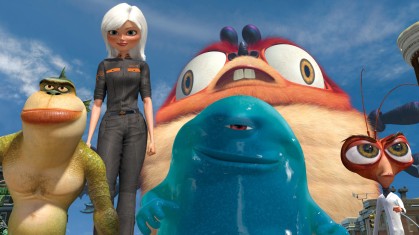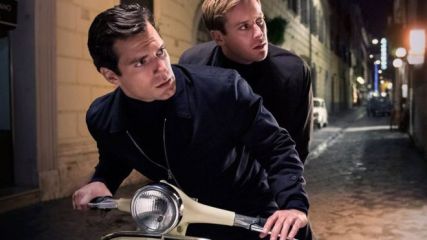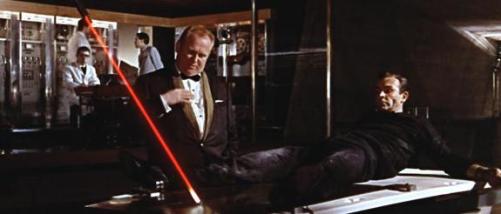
If you’re going to read this blog, I suppose there’s something you should know about me right off the bat: I fucking love animation. I’ve been obsessed with the medium — especially the pure, hand-drawn and stop-motion stuff — ever since I discovered He-Man and the Masters of the Universe (1983-1985) and Voltron: Defender of the Universe (1984-1985) as a child. (I actually broke my wrist, swinging a plastic sword around and shouting, “I have the power!” when I was two years old.)
That said, I continue to watch a lot of animated features as an “adult,” and I recently took a chance on the Dreamworks release known as Monsters vs. Aliens — a 90-minute CGI romp that blends references from all the major science fiction films of the past 50 years into a silly and colorful adventure. Overall, I found it to be extremely decent. It never attempted to get deep or pull on any heartstrings, but it maintained its light and breezy tone from beginning to end, evoking a few genuine chuckles along the way. It also benefited from some really great voice acting by well-known artists such as Reese Witherspoon, Kiefer Sutherland, Will Arnett, Rainn Wilson, Amy Poehler, and Stephen Colbert.
The computer animation was adequate enough to propel the story at a steady pace and dazzle the senses every once in a while. And, even though the characters’ mugs were — for the most part — ugly as sin, the animators managed to create some really brilliant facial expressions that added a little more depth to the already punchy dialogue. They also gave us the wonderfully behemoth and dead-eyed mutated bug, known affectionately as Insectosaurus, whom I will never forget. The movie would have gotten an extra pot leaf if it had been filmed one cel at a time. But it maintains a certain charm of its own, and it is in no way offensive to even the most sophisticated sensibilities.
Three pot leafs out of five:
![]()
![]()
![]()

